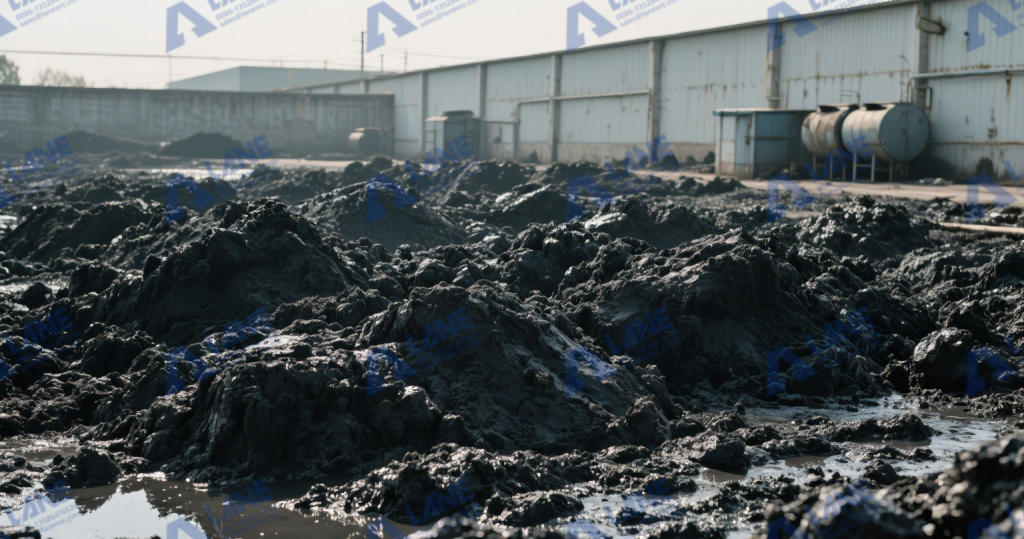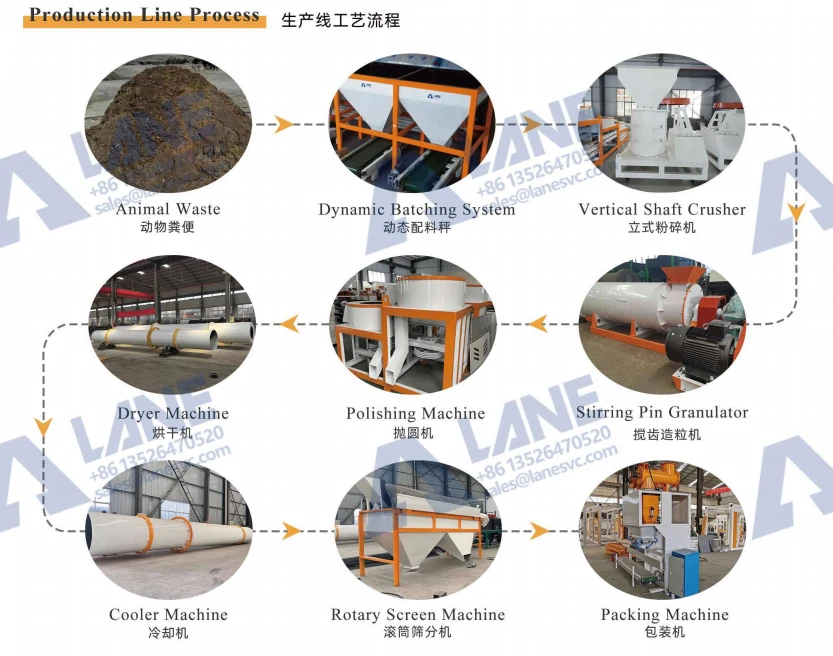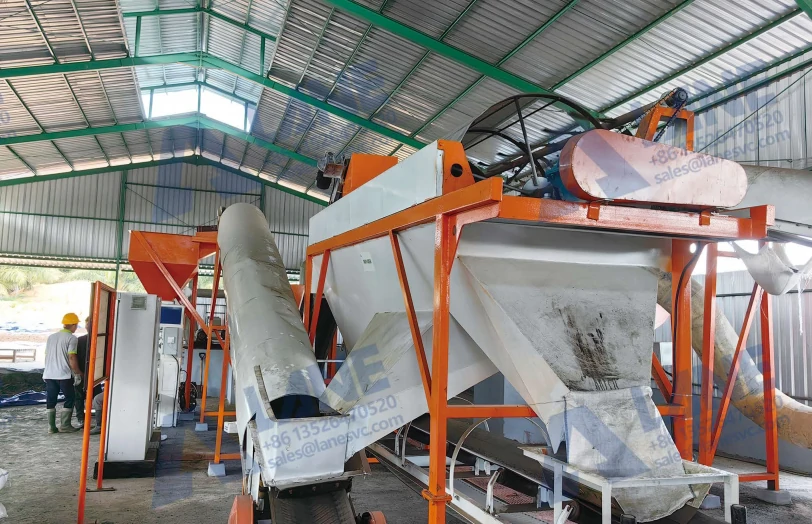Organic fertilizer production from municipal sludge is an effective solution to the global waste management crisis and the growing demand for sustainable agricultural practices. Urban sludge, a by-product of wastewater treatment, is usually landfilled or incinerated, causing environmental pollution. However, through proper treatment, these wastes can be transformed into nutrient-rich organic fertilizers via organic fertilizer production lines.

By integrating sludge recycling with organic fertilizer production, municipal and agricultural sectors can achieve waste reduction and soil restoration. Organic fertilizer production lines play a crucial role in ensuring the efficient and environmentally friendly processes of composting, granulation, and packaging.
Why Choose Organic Fertilizer Production from Municipal Sludge?
Waste Utilization: Municipal sludge is an abundant waste product that, when properly processed, provides essential nutrients for soil.
Sustainability: By recycling sludge into fertilizer, we reduce landfill usage and lower greenhouse gas emissions from incineration.
Soil Health: Organic fertilizer from municipal sludge enhances soil structure, water retention, and microbial activity.
Cost-Effective: The production process often reduces the need for external raw materials, lowering the cost of fertilizer production.
Compliance with Regulations: With proper treatment, sludge can meet environmental standards for organic fertilizer, making it a viable product for sustainable agriculture.
Step-by-Step Process of Organic Fertilizer Production from Municipal Sludge
Step 1: Sludge Collection and Preliminary Treatment
Municipal sludge is collected from wastewater treatment plants. Typically, this sludge contains water (about 95%) and solid organic matter. The first step is to dewater the sludge, reducing its moisture content to around 70%. This is done using sludge dewatering machines, such as centrifuges or belt filter presses.
Step 2: Sludge Stabilization and Pasteurization
Stabilizing the sludge is essential for eliminating pathogens and odors. This is typically achieved by composting the sludge in large, aerated piles or in-vessel composting systems. By maintaining optimal conditions (aeration, moisture, and temperature), microbes break down organic materials in the sludge, turning it into compost while reducing harmful microorganisms.
Step 3: Blending with Carbon-Rich Materials
To balance the carbon-to-nitrogen ratio (C:N), which is crucial for efficient composting, the treated sludge is mixed with carbon-rich materials such as straw, wood chips, or sawdust. This stage improves aeration, enhances decomposition, and ensures the final product is safe for agricultural use.
Step 4: Composting
Once blended, the mixture is composted further in a composting system. Crawler type compost turners or windrow composters help maintain proper moisture levels and aeration, ensuring a consistent and even composting process. The temperature of the compost pile should reach between 55–65°C to ensure pathogens and weed seeds are destroyed.
Step 5: Granulation
After composting, the organic material can be processed into granular form for easier application. Granulation is performed using an efficient organic fertilizer granulator such as a rotary drum granulator or stirring pin granulator, which forms uniform granules from the compost mixture. These granules are easier to transport, store, and apply than bulk compost.
Step 6: Drying and Cooling
Freshly formed granules may contain moisture, which can cause them to clump together. To ensure that the granules remain free-flowing and stable during storage, they are passed through a rotary drum dryer to reduce moisture content to the ideal level. The cooled granules are then screened for uniformity using a rotary screener.
Step 7: Packaging
The final product is bagged and sealed using automatic packing machines. Whether for small retail packages or bulk deliveries, packaging is an essential step in preparing the product for the market. The product can be sold as a ready-to-use fertilizer for farmers or garden centers.

LANE’s Equipment for Organic Fertilizer Production from Municipal Sludge
LANE offers a comprehensive range of equipment tailored for organic fertilizer production from municipal sludge. Their organic fertilizer production line integrates various machines that ensure the process is efficient, safe, and scalable. Some key equipment includes:
Sludge Dewatering Equipment
Centrifuges and belt presses remove excess water from sludge, making the material more manageable for further treatment.
Composting Systems
Crawler type compost turners and in-vessel composters create optimal conditions for aerobic degradation of organic matter.
Granulation Systems
Rotary drum granulators and stirring pin granulators transform composted sludge into uniform, high-quality fertilizer granules.
Drying and Cooling Equipment
Rotary drum dryers and coolers regulate moisture levels in granules, ensuring stability and quality.
Screening and Packing Machines
Rotary screeners and automatic packing machines ensure the product is packaged and ready for retail or agricultural use.
LANE’s turnkey solutions ensure that all stages of the organic fertilizer production line from sludge treatment to final packaging are seamless, high-efficiency processes that reduce labor costs and improve productivity.
Case Example 1: India’s Agricultural-Focused Solution
India’s rapid urbanization has created huge amounts of municipal sludge, often dumped without treatment. In one pilot project in Maharashtra, local authorities implemented an organic fertilizer production from municipal sludge program using a small-scale organic fertilizer production line supplied by LANE.
The system processed 10 tons of sludge per day, combined with sugarcane bagasse as a carbon additive. Composting was carried out with windrow piles turned by mechanical turners, while granulation was done with a stirring pin granulator to create bio-organic fertilizer. Farmers in nearby villages applied the composted fertilizer to sugarcane and vegetable fields, noticing improved soil structure and reduced input costs. The success of this model demonstrated how decentralized sludge-to-fertilizer projects could benefit both waste management and agriculture in developing regions.
Case Example 2: Europe’s Export-Oriented Approach
In Europe, strict environmental regulations require municipalities to treat sludge sustainably. A wastewater treatment plant in Germany invested in a high-capacity organic fertilizer production line capable of processing 30,000 tons of sludge annually. Using advanced dewatering and in-vessel composting, the sludge was stabilized and then granulated into uniform pellets using a double roller granulator. The pellets were coated for moisture resistance and exported as an eco-friendly fertilizer to other EU countries. The project turned a costly waste-disposal burden into a profitable business, while ensuring compliance with EU waste and agricultural policies.

Benefits of Organic Fertilizer Production from Municipal Sludge
Environmental Impact: Converting sludge into organic fertilizer reduces reliance on landfills and incineration. This minimizes greenhouse gas emissions, lowers leachate pollution risks, and contributes to cleaner urban environments.
Soil Health Improvement: Organic fertilizer made from sludge contains valuable nutrients such as nitrogen, phosphorus, and micronutrients. It enriches soil with organic matter, improves aeration and water retention, and encourages the growth of beneficial microorganisms that sustain long-term fertility.
Resource Efficiency: Municipal sludge is often considered a waste problem, but through processing it becomes a valuable agricultural input. This recycling reduces the demand for synthetic fertilizers and conserves non-renewable resources like phosphate rock.
Economic Opportunity: Fertilizer production from sludge creates a new revenue stream for municipalities and companies. Farmers benefit from lower costs compared to chemical fertilizers, while cities save on waste disposal expenses.
Sustainable Farming Support: The use of sludge-based organic fertilizer supports eco-friendly farming systems, reduces chemical dependency, and aligns with global trends toward circular economy and green agriculture.
Organic fertilizer production from municipal sludge is not only an effective way to manage waste but also a sustainable solution that benefits both the environment and agricultural productivity. By converting sludge into valuable organic fertilizer, municipalities and agricultural enterprises can reduce their carbon footprint, recycle waste, and improve soil health.
With LANE’s organic fertilizer production line, cities and industries can seamlessly integrate sludge treatment into their operations, producing high-quality, nutrient-rich fertilizers that meet the needs of modern farming.
For more details, please feel free to contact us.
Henan Lane Heavy Industry Machinery Technology Co., Ltd.
Email: sales@lanesvc.com
Contact number: +86 13526470520
Whatsapp: +86 13526470520